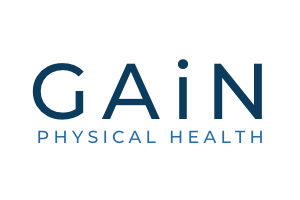 In 2020 The Canadian Society of Exercise Physiology in association with the Public Health Agency of Canada and other stakeholders, released some unique guidelines that advised Canadians who are over 65 years of age what they need to do to stay healthy and reduce the risk of chronic illness. They advised on 3 significant components of a healthy lifestyle:
In 2020 The Canadian Society of Exercise Physiology in association with the Public Health Agency of Canada and other stakeholders, released some unique guidelines that advised Canadians who are over 65 years of age what they need to do to stay healthy and reduce the risk of chronic illness. They advised on 3 significant components of a healthy lifestyle:
- Physical activity
- Sedentary behaviour
- Sleep
1. Physical activity:
- Aim for a total of 150 minutes of moderate to vigorous aerobic activity per week
- Muscle strengthening activities twice per week
- Several hours of light activities such as standing per week
- Activities to challenge balance
Our Physical Activity tips include:
- For aerobic activity – a brisk walk, swimming, dance class (enough to get your circulation going and your breathing a little heavier)
- For balance – single leg balance practice, Yoga, Tai Chi, Pilates
- For strength – Dumbbells, Pilates, body weight exercises, resistant bands
- Most importantly keep moving! When it comes to the body, use it or loose it applies, try to perform activities that frequently take your joints through a full range of motion.
2. Sedentary behaviour:
- Aim for less than 8 hours of sedentary time per day
- Limited recreation screen use to less than 3 hours per day
- Take frequent breaks from long periods of sitting
3. Sleep:
- Aim for 7-8 hours of sleep per night
- Set regular consistent sleep and wake times
Following these guidelines has been linked to a lower risk of death, type 2 diabetes, weight gain, cardiovascular disease, several cancers and improved bone health, cognition, dementia, anxiety and depression.
To read the guidelines in full click on the following link https://csepguidelines.ca/guidelines/adults-65/
 Osteopathy + Ageing: How can it help?
Osteopathy + Ageing: How can it help?
You shouldn’t have to put up with aches and pains simply because you’re getting older. The Osteopathic assessment and treatment process includes advice on staying active, preventing common problems such as falls, and managing conditions such as Osteoarthritis, Rheumatic pain and Osteoporosis.
Osteopathic Therapy is based upon the individual needs of the patient and so varies depending on your age, fitness levels and diagnosis. Therapists use a wide range of hands-on techniques, focusing on releasing tension, stretching muscles and improving your joint mobility.
You can read more about Osteopathic Therapy and how it could help you by clicking here
References:
The Canadian Society for Exercise Physiology (CSEP) – https://www.csepguidelines.ca
The Institute of Osteopathy – https://www.iosteopathy.org




